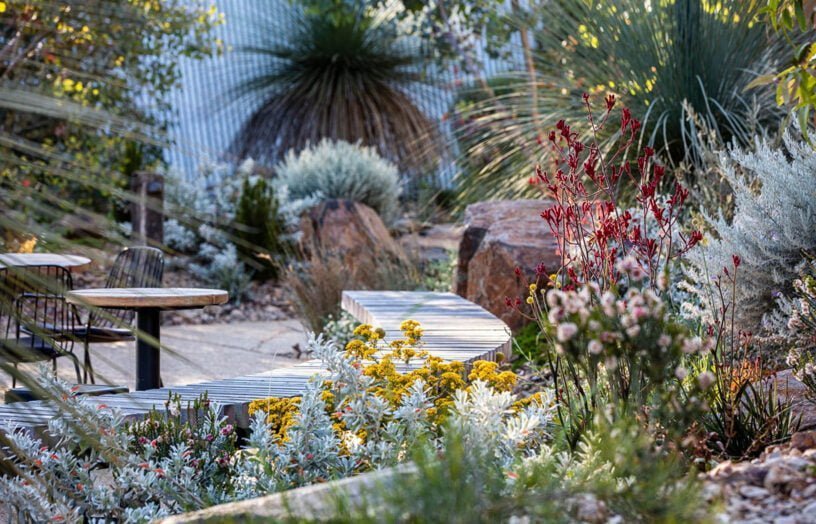Working with contours
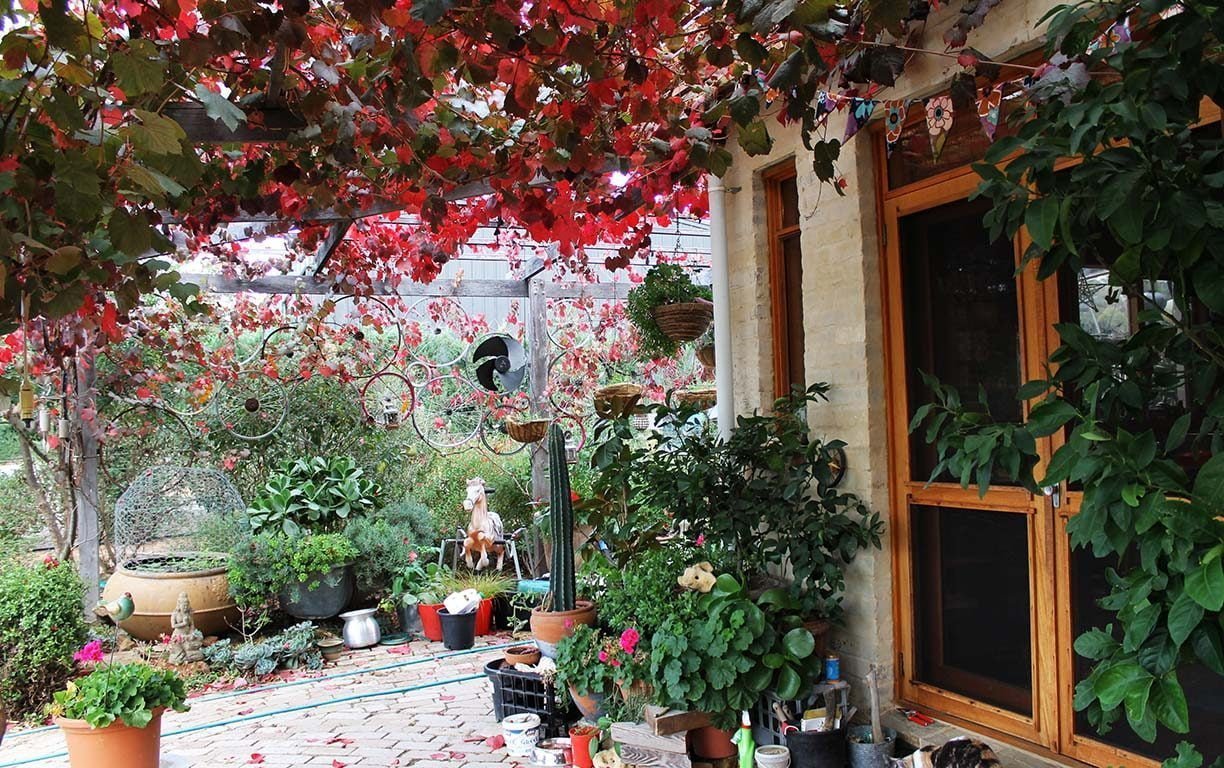
Sarah Coles speaks to Guildford local Louise Balaz-Brown about gardening in tough conditions, the importance of contours and the miracle of sheep manure.
I’m tucking into a plate of beans on toast at the Guildford General Store when a man in overalls stomps in and says to anyone within earshot, “When’s it gonna rain?”. It’s a common question in these parts, but you wouldn’t know it looking at Louise Balaz-Brown’s garden.
Guildford is a town of approximately 350 people on the Loddon River between Daylesford and Castlemaine, in Victoria. In 2013, Louise bought a bare one-acre block and, with the help of her son Lynden and builder Jean Lucchesi, set about building a passive solar house and garden.
Standing in the garden, I’m flanked by Indian bean trees, passionfruit, roses, persimmon, maple, crabapple, butterfly bush, winter honeysuckles, lilacs, euphorbias, Jerusalem artichokes, grapevines, lilies, japonicas, oaks, and the ever-changing foliage of the tamarisk. I have come here to find out how Louise manages to grow an abundant garden in an area of low rainfall.
The nearest weather station is 8.7 km away in Yandoit, where the average annual rainfall is 619.4 mm. Of Guildford’s annual rainfall, “We’ve only been getting around 250 mm,” Louise says. She goes on to explain that “Guildford is in a rain shadow between Mt Franklin, Mt Tarrengower and Mt Alexander.” A rain shadow is the dry area on the downwind side of a mountain.
On contour
Louise’s mind was on the garden before the foundations of the house were even laid. “The first thing we looked at was the water situation. There was nothing here except a sloping block facing north and we knew it was going to be important to collect all of the water.”
Louise’s son Lynden is a farmer and has studied the water capture techniques of permaculture and holistic land management. Using a total station (a surveying instrument), he surveyed the contours of the block and they dug a system of swales. A swale is a ditch and a mound, aligned on a contour line to capture water and direct it to the plants.
During floods, the water level in the swales is banked up high enough to reach the tree trunks. “When we’ve had big rains, the swales have filled up past the trees,” says Louise.
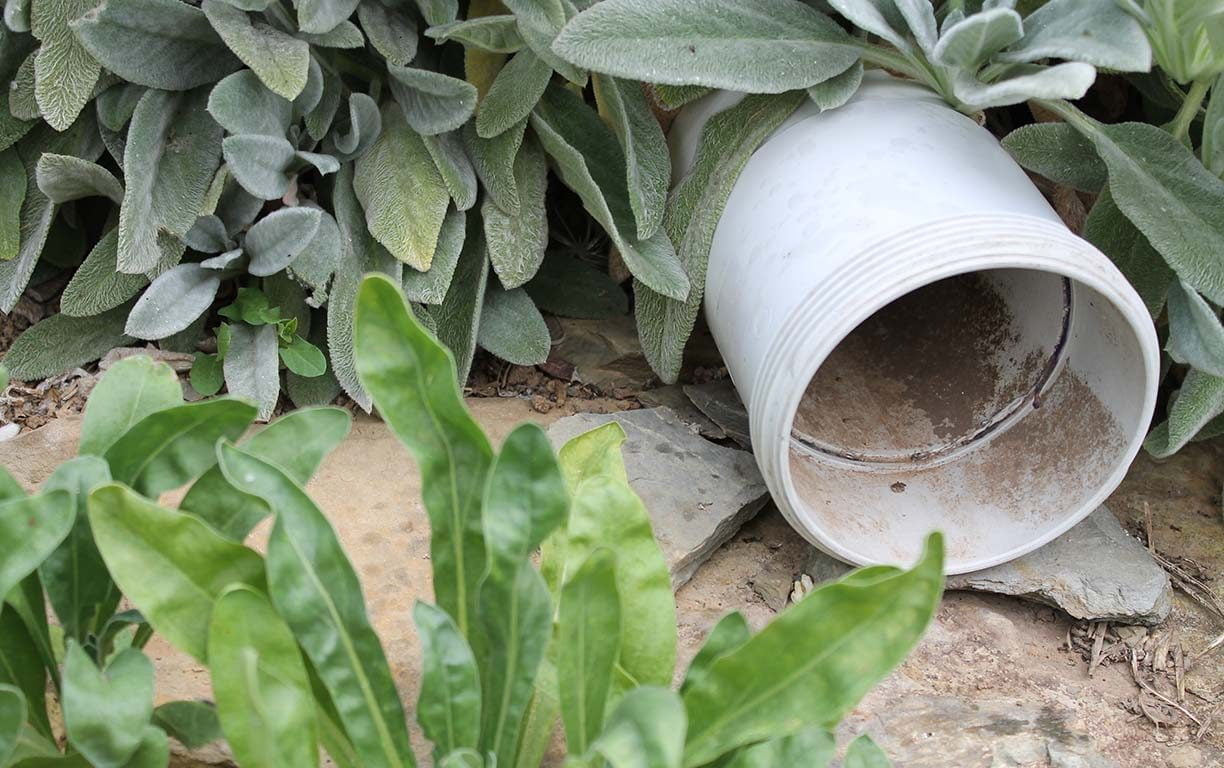
Rainwater harvesting
On the rare occasions when it does rain, rainwater is captured from the roof of the house and carport into two water tanks—22,000 L and 16,000 L—with half diverted to a billabong, an unlined pond full of water lilies and frogs. The water level is low at the moment. Around the billabong are Manchurian pear trees, whose roots receive the water that seeps out of the billabong. The garden paths are lined with cardboard and straw, so are also water permeable.
The property is still connected to town water, which Louise partially relies on to water the garden in summer. Louise expects that as the shade trees grow larger, water usage will decrease. Louise does not use any irrigation systems, as she prefers to avoid the use of plastic in the garden: “I water everything by hand on an as-needs basis.”
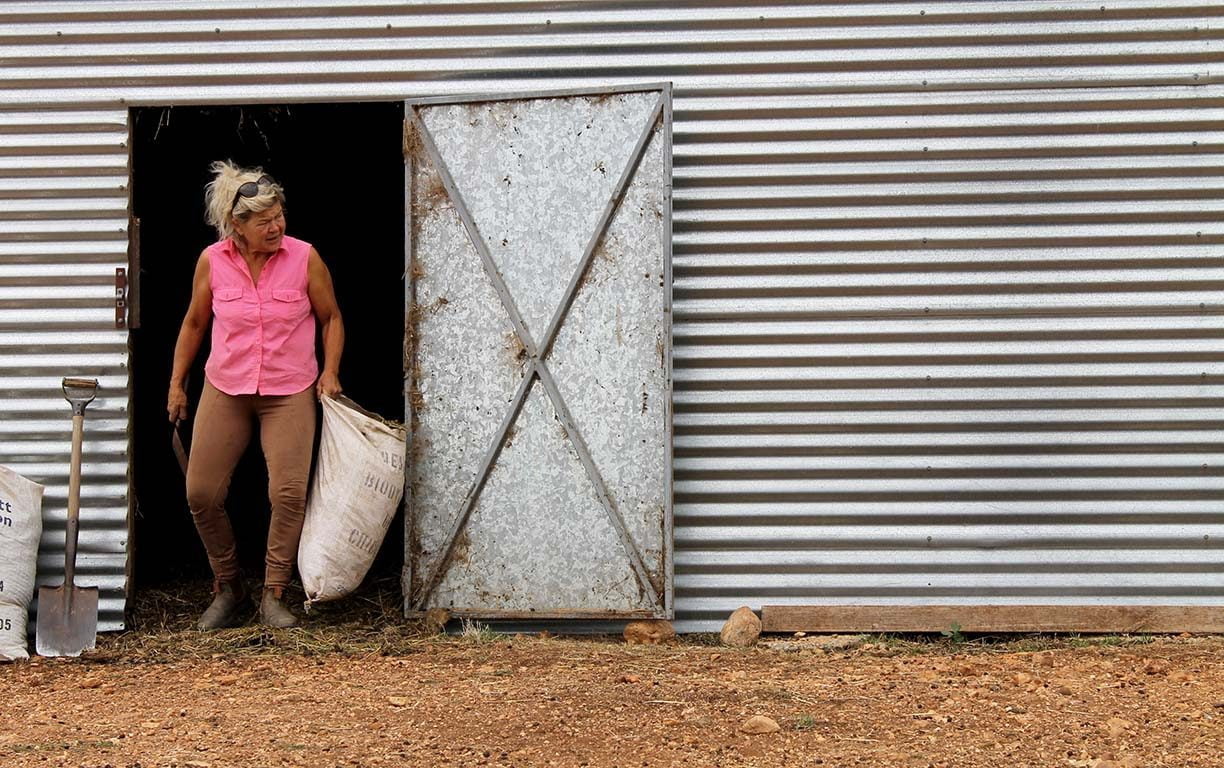
The miracle of sheep manure
The other secret to the garden’s success is Louise’s relationship with a local sheep farmer at Mt Franklin who lets her collect manure. The application of manure increases the soil’s fertility and moisture-holding capacity. Louise collects a trailer-load of sheep manure at least once a month, and has done so for the past seven years.
In the early days of the property, Louise and Lynden also collected roadkill from the side of the highway. “Every time I went to collect the sheep poo I’d pick up a dead kangaroo. I hate seeing dead animals on the side of the road. That peach tree has three kangaroos buried beneath it,” she says. Louise and Lynden would dig a hole to plant a tree in and then fill it with roadkill, leaves and sheep poo.
Louise says the whole process can be scaled down for city living. “If you haven’t got access to sheep poo, have a worm farm. If you’ve got a small backyard, raise guinea pigs for manure.”
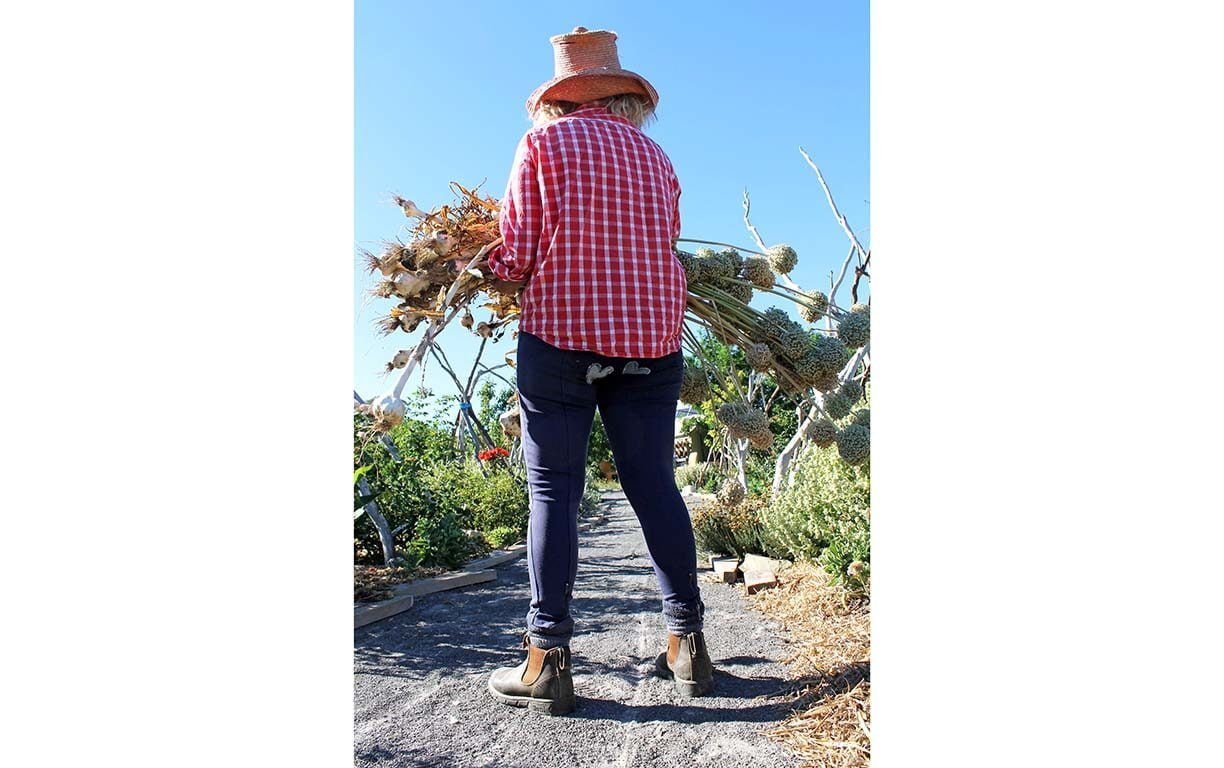
Mulch
The soils are clay. Aside from applying sheep poo, Louise has been improving the soil structure through the application of mulch. She collects leaves from her garden and also buys old or damaged hay from farmers that is unsuitable for animal feed. “The swales and trees are heavily mulched. I’m always putting more carbon on the garden.” Louise points to a poplar: “The deciduous trees lose their leaves which I use as mulch. Nothing leaves the property.”
Dry-tolerant plants
The sunny and exposed areas of the property are planted with drought-resistant plants. Louise is growing a staggering variety of species. There are over 200 trees on the property including poplar, olive, medlar, loquat, feijoa, pomegranate, apple, callistemon, ornamental pear, plum, cedar, chestnut, nashi, walnut, almond, hazelnut, elderberry, maple and elm.
Windbreaks are crucial here, where the hot summer winds dry out gardens. Louise has planted olive Olea europaea, sage-leaf butterfly bush Buddleja salviifolia, and Chinese hawthorn Photinia serrulata along the perimeter. “It is all about making sure the garden isn’t getting battered by wind and heat.”
Slow down and stare
Louise’s garden at Guildford is the result of careful planning and observation, the continual addition of organic matter to the soil, and efficient water capture. The results are outstanding. People driving past slow down to stare, and there is a surplus of fruit and vegetables to share.
DIY swales
A swale is a shallow trench dug along a contour, with a berm (a small hill) on the downhill side. The berm increases the amount of water that can be retained and is often planted out. Swales are commonly used in permaculture gardening as a method of stopping stormwater runoff. Capturing rainwater in the landscape is an efficient way to irrigate and improve soil quality. All of the points along the contour line are exactly the same height. This ensures that a trench dug along the contour slows the water and spreads it across the available area. Slowing rainfall and spreading it out reduces soil erosion and keeps the water on the property where the plants need it. Swales are suitable for backyards too, as long as the swale is specific to the site. For more on swales, including tips for handling overflow and building them on a backyard scale, see goodlifepermaculture.com.au/swale-pathways
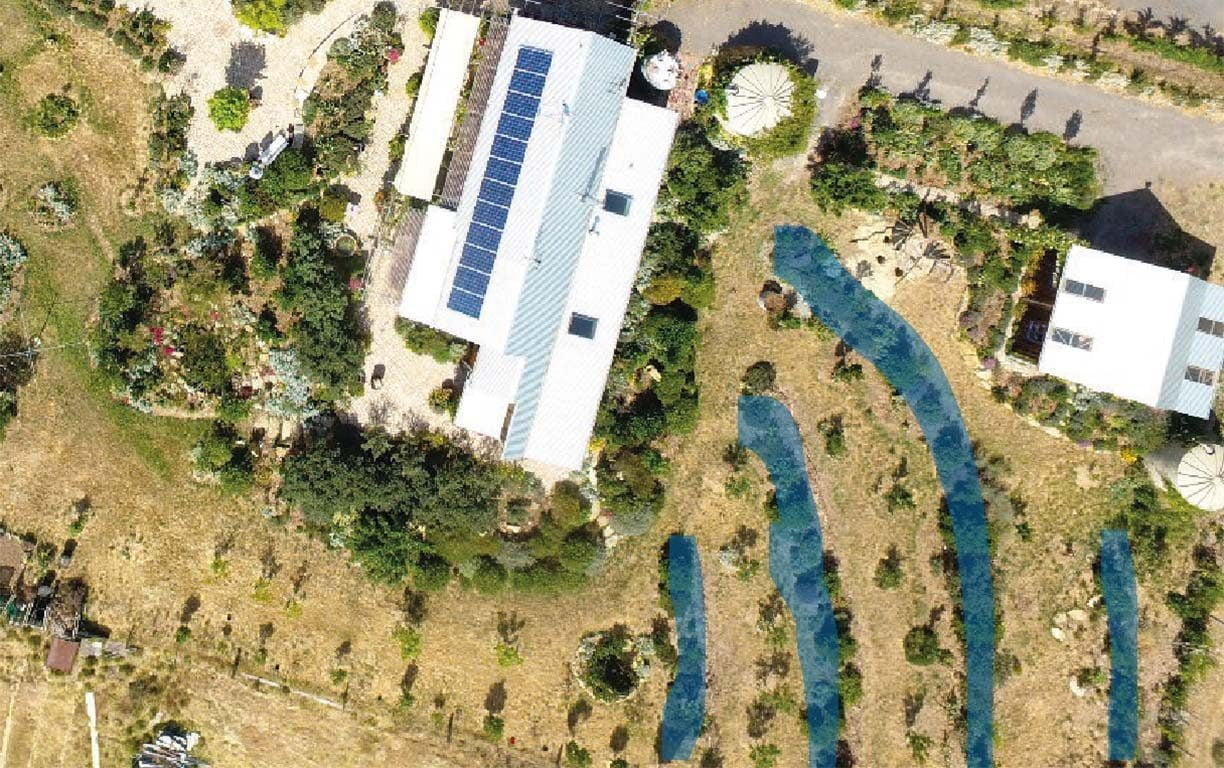
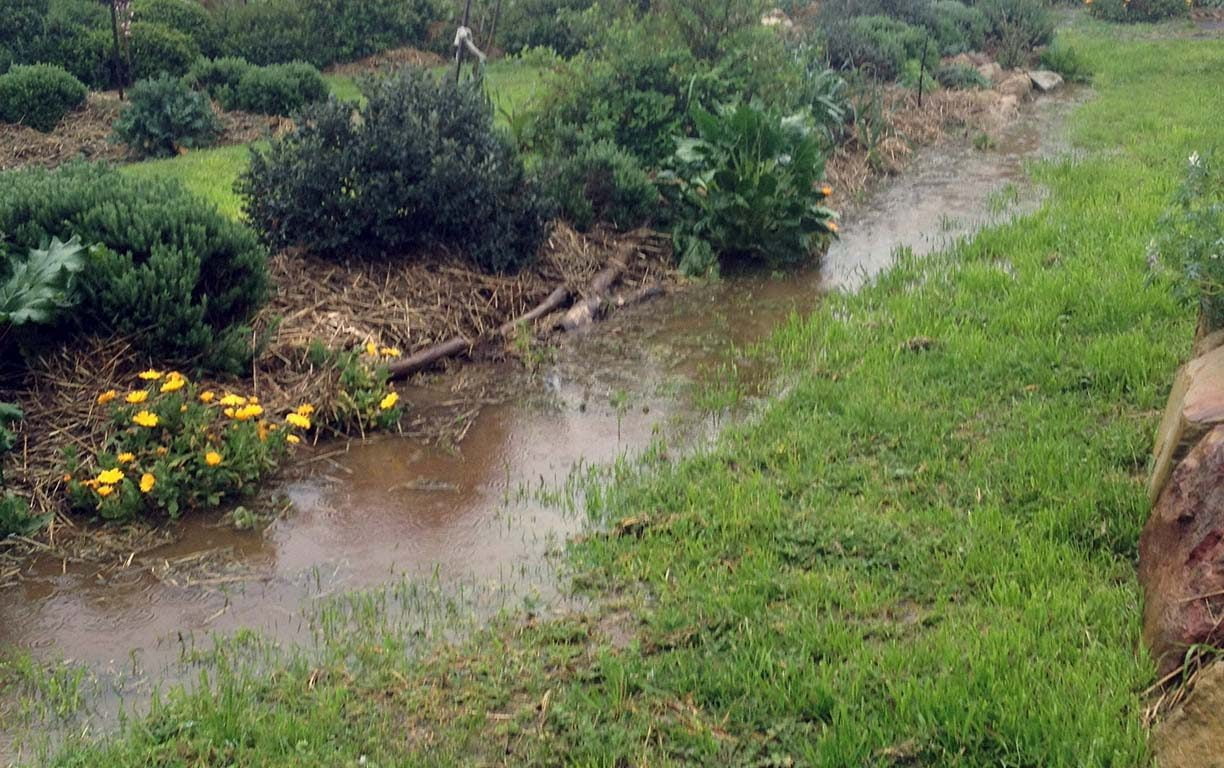
Further reading
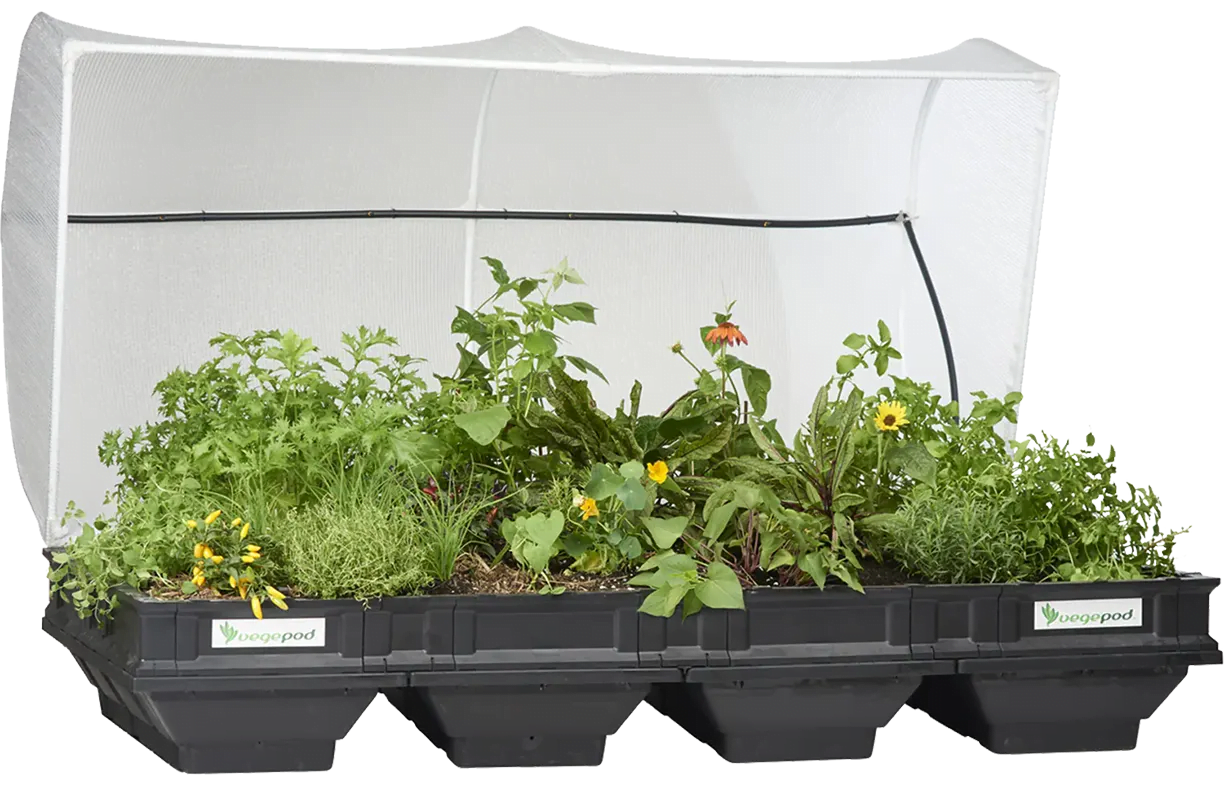 Products
Products
Product profile: Pods for veggies
With the cost of food trending rapidly upwards, the move to growing food at home has become a popular one. While it’s easy if you have a garden, what do you do if you don’t?
Read more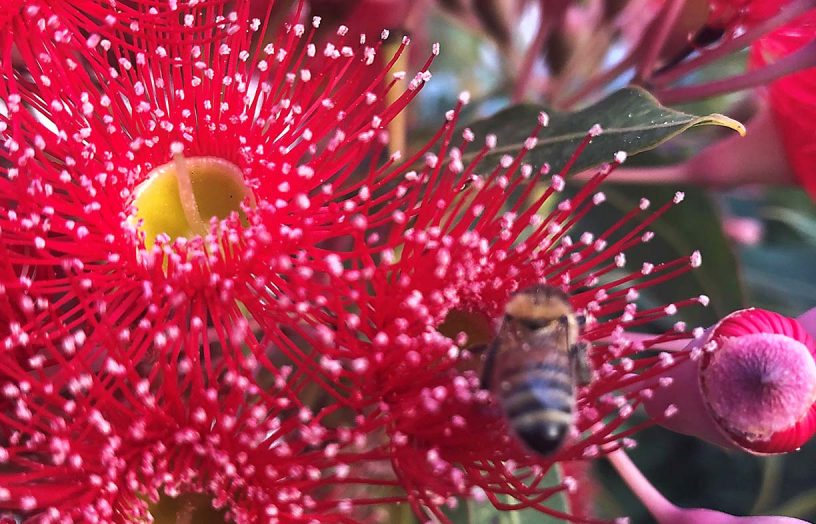 Water saving
Water saving
Nurturing your native garden
Just how much maintenance do you need in a native garden? Robyn Deed gets some tips from landscaper Haydn Barling on how to sustain a beautiful, biodiverse garden in the suburbs.
Read more

